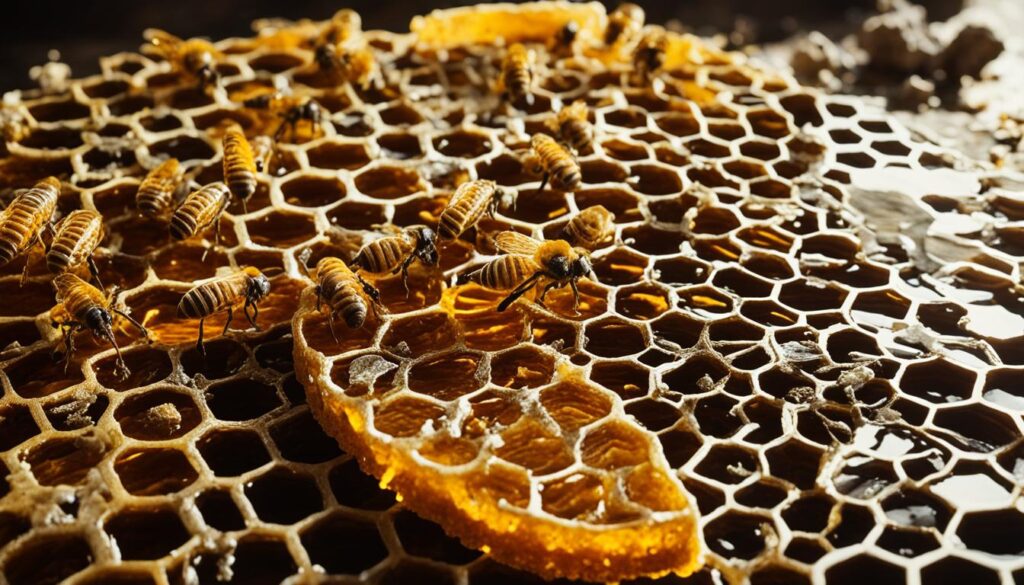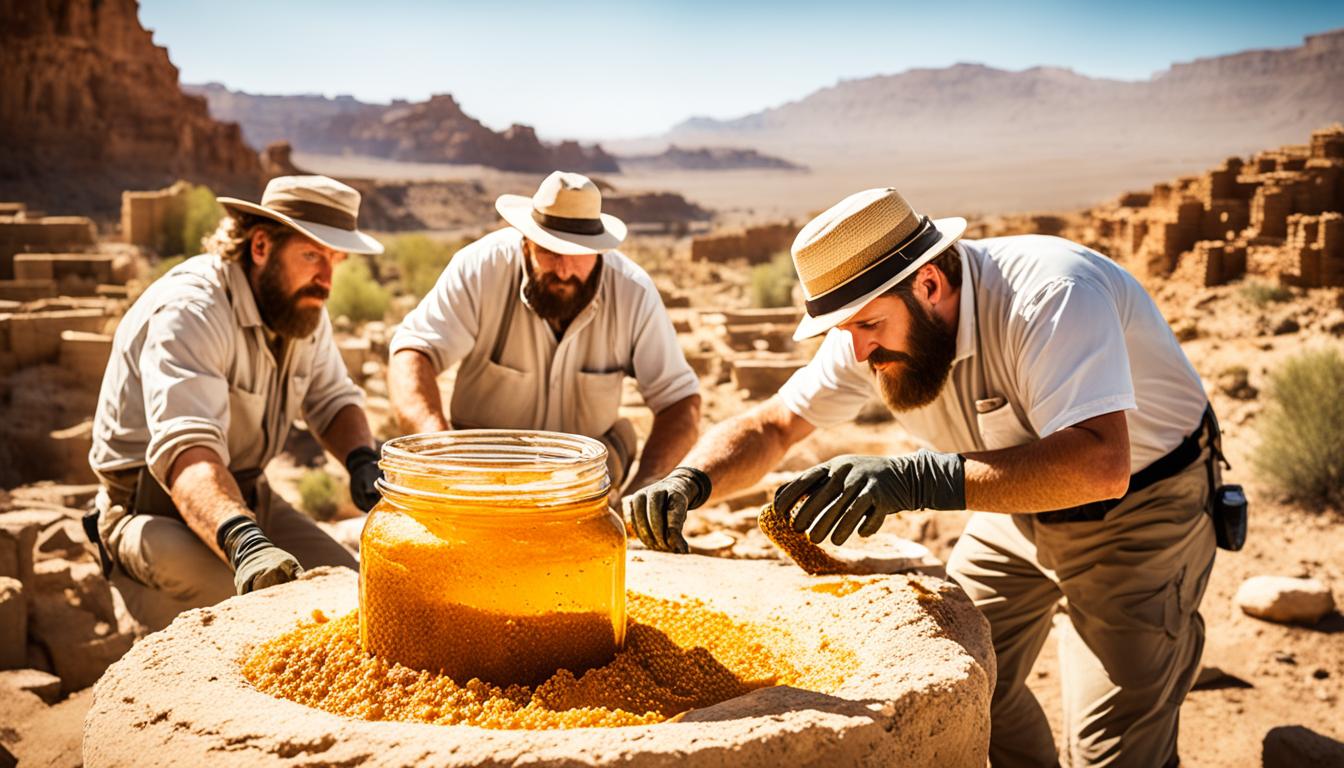Archaeologists have made a big find. They discovered pots of 3,000-year-old edible honey in ancient Egyptian tombs. This shows how well honey can be preserved over time. The honey was found with other old items, giving us a peek into ancient Egypt’s food ways and culture.
The honey was in its original clay pots, ready for the pharaohs in the afterlife. This shows how important honey was to the ancient Egyptians. Finding this honey tells us a lot about its history and its use in old times.
Key Takeaways
- Archaeologists discovered 3,000-year-old edible honey in Egyptian tombs
- The honey remained perfectly preserved for millennia
- Ancient Egyptians placed honey in tombs for the afterlife journey
- The find reveals insights into ancient food preservation techniques
- Honey’s significance in ancient Egyptian culture is highlighted
- The discovery showcases honey’s unique property of never spoiling
The Discovery of Ancient Honey in Egyptian Tombs
Archeologists found a sweet surprise in Egyptian tombs – 3,000-year-old edible honey. This amazing find shows us how ancient people preserved food. King Tutankhamun’s tomb had the most famous honey pots, placed with his treasures for the afterlife.
The Sun Temple, from 2400 BCE, has hieroglyphics of beekeeping. These pictures show how important honey was in Egyptian life. Finding preserved honey in tombs shows the Egyptians knew how to keep honey fresh for a long time.
Food archeology experts are amazed by these edible antiques. The honey’s survival for so long shows its special preservation abilities. This discovery gives us a peek into ancient Egyptian culture and their smart food storage methods.
The tomb honey’s perfect condition after thousands of years stuns scientists. It proves honey’s amazing shelf life and resistance to spoilage. This discovery connects ancient food practices with modern preservation techniques.
3,000-Year-Old Edible Honey: A Testament to Honey’s Longevity

Edible honey found in Egyptian tombs is over 3,000 years old. This shows how long honey can last. It has made people think about its role in food history and its long life.
Honey stays fresh for thousands of years because of its special makeup. It has very little moisture, which stops bacteria and germs from growing. Its pH level is between 3 and 4.5, which also helps keep it fresh.
Bees are key to honey’s long life. They add an enzyme called glucose oxidase when making honey. This enzyme makes gluconic acid and hydrogen peroxide, which help keep honey fresh. These things make honey one of the longest-lasting foods we know.
This long-lasting honey tells us a lot about how our ancestors kept food fresh. It shows their smart use of honey’s special qualities. The fact that this old honey still exists connects us to our food history in a sweet way.
The Science Behind Honey’s Eternal Shelf Life
Honey can last for thousands of years because of its special makeup. It has a lot of sugar, which pulls moisture out of things that could spoil it. This makes it hard for bacteria and fungi to live in honey. This is why honey stays good for so long and has caught the interest of food archeologists.
Bees are key to honey’s long life. They dry out the nectar by flapping their wings and add an enzyme. This enzyme makes hydrogen peroxide, which helps keep honey fresh. With low moisture and these natural germ-fighters, honey doesn’t go bad easily.
Storing honey right is important to keep it good forever. It should be kept in airtight containers to keep out moisture. This keeps its preservative qualities strong. Even though processed honey stays liquid, raw honey might turn into crystals. But this doesn’t mean it’s bad or less safe to eat. Honey is a true ancient food that stays good for thousands of years.

Leave a Reply